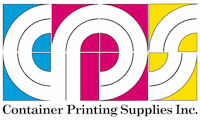USING ACCU DYNE TEST MARKER PENS TO MEASURE SUBSTRATE SURFACE ENERGY
ACCU DYNE TEST marker pens can be used to measure the surface energy of films and other non-absorptive substrates. This method parallels ASTM Std. D2578, which covers the testing of polyethylene (PE) and polypropylene (PP) films via the application of formamide/ethyl Cellosolve solutions. The fluids used in ACCU DYNE TEST marker pens are based on those specified in ASTM D2578; the critical difference between this test and the ASTM technique is the manner in which the fluids are applied to the test sample.
In general, the ability of a substrate to anchor inks, coatings, or adhesives is directly related to its surface energy. If the substrate surface energy does not significantly exceed the surface tension of the fluid which is to cover it, wetting will be impeded and a poor bond will result. Thus, for most solvent based printing, plastics need to be treated to 36 to 40 dynes/cm; water based inks usually require 40 to 44 dynes/cm; some laminating and coating applications require surface energies of 50 dynes/cm or more. Clearly, surface energy must be assessed before printing, coating, or laminating is attempted.
ACCU DYNE TEST marker pens perform well on most non-absorptive materials. It is critical that the test fluid does not alter the surface properties of the substrate. For example, if the test fluid permeates a fibre substrate (such as paper) and causes swelling, results will indicate unrealistically easy wetting. A chemical reaction between the test fluid and the substrate invalidates results altogether.
To ensure replicability of this test, material preparation and test technique must be standardized. ASTM Std. D618 documents suggested conditioning methods. Unfortunately, this standard is untenable for treated film testing; conditioning times range from 24 to 96 hours. Such rigorous controls may be of value for R&D, but for normal QC testing, much shorter conditioning times should be used. Standardization of ambient, substrate, and test solution temperature is critical, as is inspectio0n methodology. Have one trainer instruct all testers to minimize variability. Relative humidity should not be excessive; higher RH tends to increase data variability. Finally, the elapsed time between extrusion or coating to test (or from test to printing, etc.) must be controlled.
